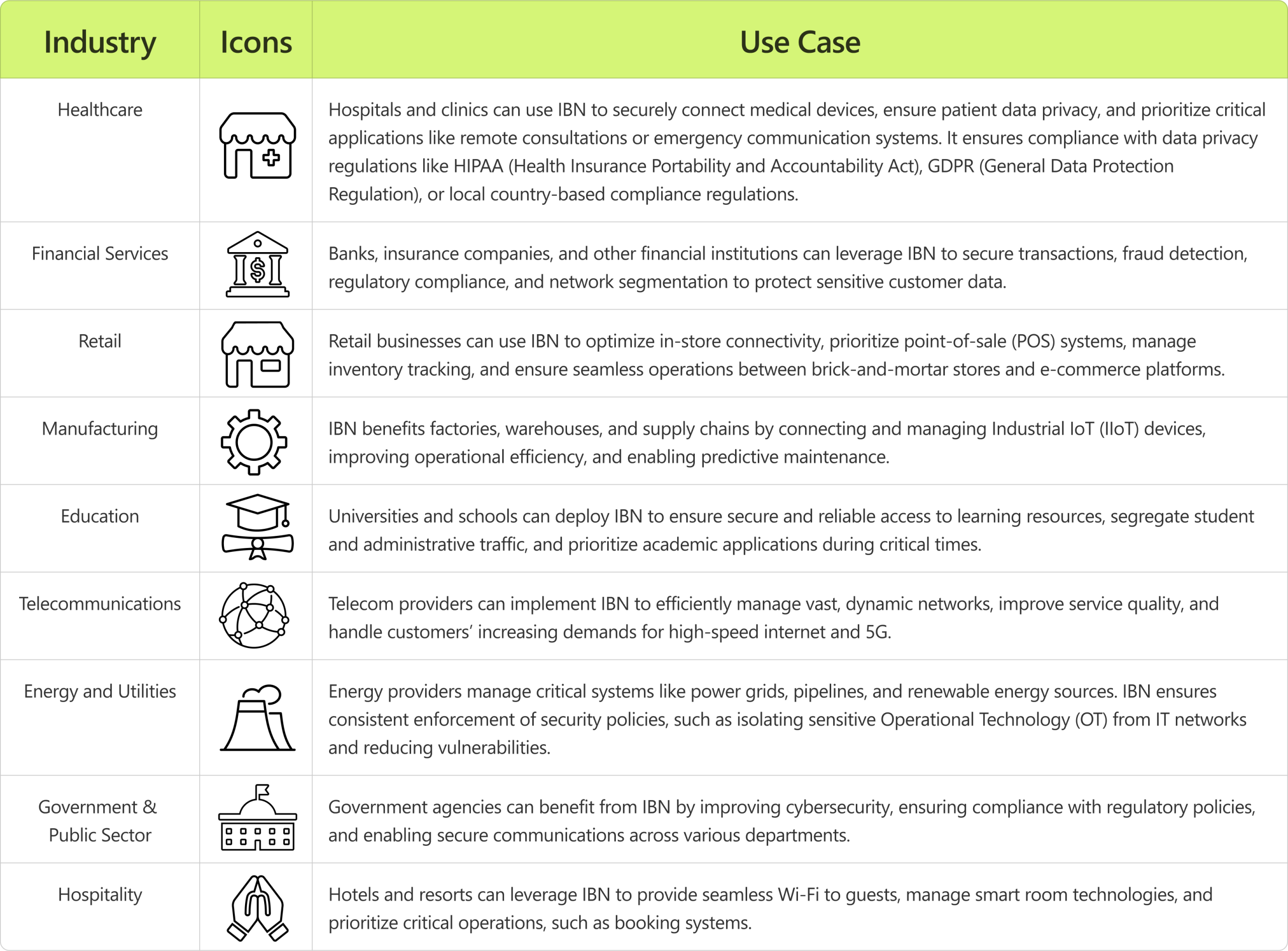Today, the whole world is talking about automation and artificial intelligence. Considering the scale on which IT administrators operate today, it’s important that the foundation of IT infrastructure is also automated and orchestrated. With an increase in digital footprint across industries of any scale and type, digital data transactions are also increasing immensely.
The rise in data flow and transactions is due to multiple applications, which lead to multi-port and protocol conversations between the host and endpoints. The dynamic nature of data demands frequent changes in these communication patterns, including changes in ports & protocols on the transport layer.
So, automation is the right solution for the network administrators to manage and respond to these ever-evolving network changes effectively.
The big question is how automation will relate to changing demand for end users’ data connections. This is where Intent-Based Networking (IBN) comes into play.
What is Intent-Based Networking (IBN)?
Intent-Based Networking (IBN) is an advanced approach for planning, managing, and running computer networks that aims to reduce or replace manual configuration efforts on network platforms or address issues around the network infrastructure. It leverages automation, artificial intelligence, and machine learning components to translate high-level business objectives or purposes into network configurations and behavior, making the network more agile, intelligent, and receptive.
To truly understand the power of Intent-Based Networking, it’s important to explore the core features that set it apart from traditional network management approaches.
Key Features of IBN
1. Intent Translation
Users can define “what” they want the network to accomplish by initiating specific traffic, like confirming secure communication between specific endpoints or machines. IBN translates these intents into “how” with specific network policies.
2. Automated Implementation
The system automates the implementation of policies across the network, lowering manual efforts and potential errors during configuration changes.
3. Continuous Monitoring & Validation
Continuous monitoring constantly manages the network status to ensure that users’ intents are met and dynamically adjusts configurations, if necessary.
4. AI/ML Insights:
AI and Machine Learning technologies analyze data in parallel, identifying potential issues and providing solutions.
Therefore, considering these advanced features, it becomes clear why IBN is more than just a technical upgrade. It is a strategic necessity.
Why Would Organizations Shift to Intent-Based Networking (IBN)?
1. Simplifies Network Management
IBN highly benefits the enterprise environment. It simplifies network management for admins, as they can express high-level goals (intents) without worrying about low-level configurations. This reduces complexity and manual effort for networks spanning multiple locations and involving diverse devices.
2. Brings Operational Efficiency & Automation
IBN automates policies, translates and deploys across the network, streamlines operations, and saves time. It prioritizes critical enterprise applications, such as video conferencing or Enterprise Resource Planning (ERP) systems, ensuring smooth operations automatically and enhancing productivity with the overall user experience.
3. Monitors Real-Time Adaptability
IBN continuously monitors the network and adjusts dynamically to maintain alignment with business intents, ensuring high performance even as conditions change. For example, if a new branch office is added to a running architecture, the network automatically adapts to accommodate the addition without compromising the performance or security of the architecture.
4. Enhances Security
IBN enforces policies consistently across devices, minimizes human errors, and ensures network segmentation, which protects sensitive data. By leveraging AI and machine learning, IBN predicts and resolves potential network issues before they impact performance or users, minimizing downtime and ensuring seamless operations for the enterprise.
5. Improve Scalability and Cost Savings
The most valuable features of IBN are its scalability and ability to grow network size and complexity. It makes automating configurations easy to manage and ensures compliance with intents. IBN reduces operational costs with improved user experience and by minimizing manual tasks.
6. Comply with Business Governance
IBN complies with business goals and aligns network behaviour with the organization’s strategic objectives. It empowers the network as a driver for business success. Enterprises ensure that their networks meet industry standards and regulations by implementing automated policies that are consistently enforced. Such benefits make IBN a game-changer for organizations seeking agility, efficiency, and network resilience.
What Business Verticals Can Adapt to Intent-Based Networking?
It’s no surprise that various industries are beginning to explore how IBN can support their unique networking needs. Below is the breakdown of some sectors that can adapt IBN to meet their daily networking needs:

IBN is maturing rapidly, and the market already offers many solutions and products to enterprises that are anticipated to employ Intent-based Networking (IBN). Let’s look at some of the leading IBN solutions in the market that are available today.
Here’s a summary of prominent products
- Cisco DNA Center: Provides automation, assurance, and AI-driven insights to ensure business intents are implemented across the network.
- Juniper Networks Apstra: Specializes in data centre automation and allows intent-based management across multi-vendor environments, focusing on simplicity and reliability.
- VMware NSX: Focuses on software-defined networking & implements intent-based policies for multi-cloud and virtualized environments with strong network segmentation.
- Arista Networks Cloud Vision: Extend intent-based capabilities to cloud and data centres, offering advanced telemetry and a centralized dashboard for policy management.
- HPE Aruba Edge Services Platform (ESP): This platform supports IBN for edge-to-cloud environments powered by AI for real-time adjustments and enhanced performance.
- Huawei Intent-Driven Network (IDN): This product provides intent-driven automation and management by focusing on enterprises and service providers looking to modernize their networks.
- IBM IBN Solutions: Offers tailored intent-based networking solutions integrating AI-powered analytics to improve network operations.
Summary
IT management is becoming increasingly complex due to the surge in data transactions. As we observe the expansion in digital footprint and data volume, the probability of encountering cybersecurity threats also increases. A well-defined, accurate policy can facilitate scalability, optimize operational expenditures, and provide advanced features such as automation and enhanced security. Embracing intent-based networking can certainly make a significant impact on the management of complex network operations.

is a Principal Architect, Infrastructure Management and Security Services (IMSS) at Happiest Minds Technologies. He has over 17 years of experience in telecom and enterprise IT services. In his journey, he worked on IT infra-security strategy, network data & security operations, framework development, and project management with various market verticals like Edtech/Retail/CPG/MFG/BFSI/Travel, and Transportation. He has spent years working on managed network operations services, planning, designing, consulting, and technical pre-sales. He handles network practice strategies, solutions offering development, consulting, and pre-sales activities. Sugam has wide-ranging interests in network security, data centers, automation, and emerging technologies.








